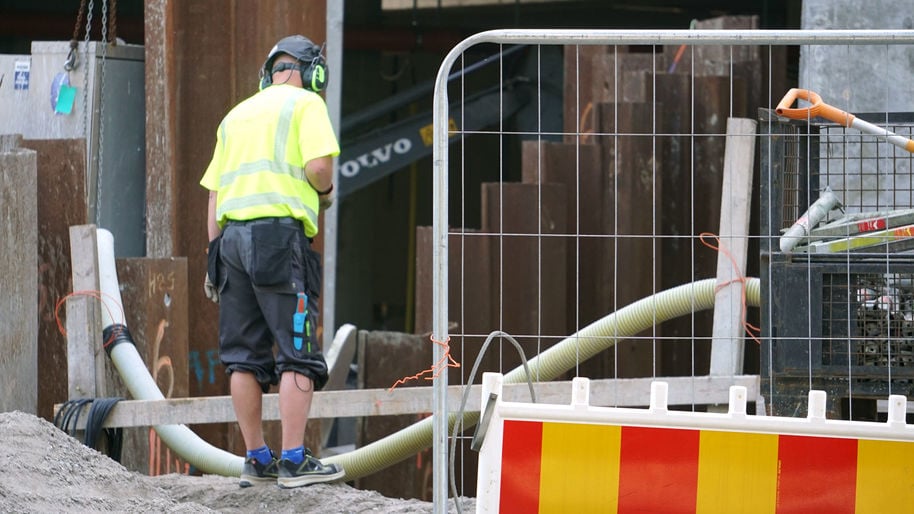How to Successfully Change the Construction Sector for the Better

What are the best ways to implement new operations models? How best to organize and implement changes that lead to expected results within companies and across the whole industry? What role does culture play in successful changes?
These are some of the questions that the Building 2030 consortium of Aalto University, as well as 20 companies, are trying to figure out. The consortium has initiated a research project about the implementation of new operations models in construction. During the January 2021 workshop, led by Professor Antti Peltokorpi, the attendees learned about Aalto’s latest research and brainstormed ways to speed up the transformation.
The drivers of successful change
The shift from age-old practices to digitalized and systematized construction does not happen without commitment and well-organized management. Harri Heinonen presented his treatise on the drivers of successful changes in the construction sector. He shared several case studies from the Finnish industry.
The safety index of construction work is one of these success stories. Its initial version saw the light of day in 1990, and it is now used systematically - with digital tools - on practically every Finnish construction site. Since the index became nationally recognized in 1995, substantial job site safety improvement has occurred. A national competition in the same decade further sped up the implementation. Companies saw the competitive advantage from the method, which additionally boosted the change. In 2003, weekly safety inspections became required by law, and the culture of safety is now ingrained in Finnish construction.

Building Information Modeling, alliancing, and the Big Room practice are other examples that Heinonen has studied. He thinks that academic research, education, international networks, and client requirements have been the key drivers for these successful changes. Change management processes also have a tremendous impact on the outcome. During the discussion that followed, the attendees were reminded about the industry's slowness and outside pressure as the ultimate driver.
Change requires both leadership and management
Tommi Tikka is writing his master’s thesis on how to implement new operations models in construction. He has started to do interviews with representatives of contractors, project management, and engineering firms. From the interviews, he has identified five recurring themes in change management: motivation, sharing of information, organizational culture, management, and leadership.
Based on Tikka’s initial analysis, the implementation of new practices is person-dependent. If a supervisor, who insisted on using specific new procedures, leaves, previous behaviors soon resurface. In general, companies struggle to share new models and best practices across projects.
Large corporations have structures and resources in place to test out new operations models. However, an organization's size does not determine its openness to innovation and experimentation. Efficient change requires both leadership – giving direction and motivation – and management – planning, organizing, and problem-solving. Construction sector companies need a strategy and a systematic process to plant improvements that stick.
Taking Takt production mainstream
One of the achievements of Building 2030 has been the implemention of lean construction and Takt production, specifically. According to Joonas Lehtovaara, an Aalto Ph.D. student, the number of Takt pilot projects has skyrocketed, and early adaptors have shown promising results, for example, up to 30 percent shorter lead times. But even forerunners struggle to make the requisite cultural shift in their operations.
Lehtovaara thinks that Takt, in general, is still at the early stages of the hype curve, showing symptoms of inflated expectations. The focus has been on techniques and individual projects. To make Takt pass “through disillusionment” and reach a critical mass, it must be systematically improved and made part of the everyday. Otherwise, the implementation of the arguably beneficial model will take decades.
Takt means a systemic change that incorporates processes, products, and digital systems. On the other hand, it enables new business models, services, and funding models that ultimately benefit the customer. In the core, as always, are people, as well as their education and long-term development.
Oskari Hänninen, whose treatise is focused on Takt implementation, organized a brainstorming session about Takt success factors. A key finding of the exercise was that every relevant project participant should be involved in planning from the get-go. That way, they become committed and understand the value of the process from their own and the whole project’s perspective.
Lessons from California
Building 2030 is continually looking for inspiration and collaboration opportunities internationally. With lean construction experience exchange in mind, Pekka Kujansuu of Skanska and his colleague visited two DPR Construction’s sites in San Francisco in late 2018. Kujansuu presented some of the practices that DPR used to instill Takt production in their operations.
The two sites utilized Takt production and visual management, and the interaction between project parties was intensive. For example, the crews from various trades dined with each other daily and attended shared training. DPR’s commitment to Takt was serious; they even moved one worker, who did not fit in the team, to another site.
From subsequent communication with DPR, Kujansuu has learned about DPR’s management of planning. They favor a flat organization structure and use months for onboarding new workers on the lean construction system. DPR also has their own employee podcast about planning.
The researchers are planning another workshop with DPR’s lean leader, Cory Hackler. The opportunity sparked many questions regarding what the attendees want to learn from DPR. The upcoming discussion will give valuable insight for Finnish companies in their transformation to lean construction.
- Published:
- Updated:
Read more news

DeployAI Partners Gather for Heart Beat Meeting in Helsinki
The European DeployAI project's partners gathered for the Heart Beat meeting hosted by Aalto University Executive Education in Helsinki.
Get to know us: Associate Professor Maria Sammalkorpi
Sammalkorpi received her doctorate from Helsinki University of Technology 2004. After her defence, she has worked as a researcher at the Universities of Princeton, Yale and Aalto.
Aalto computer scientists in ICML 2024
Computer scientists in ICML 2024